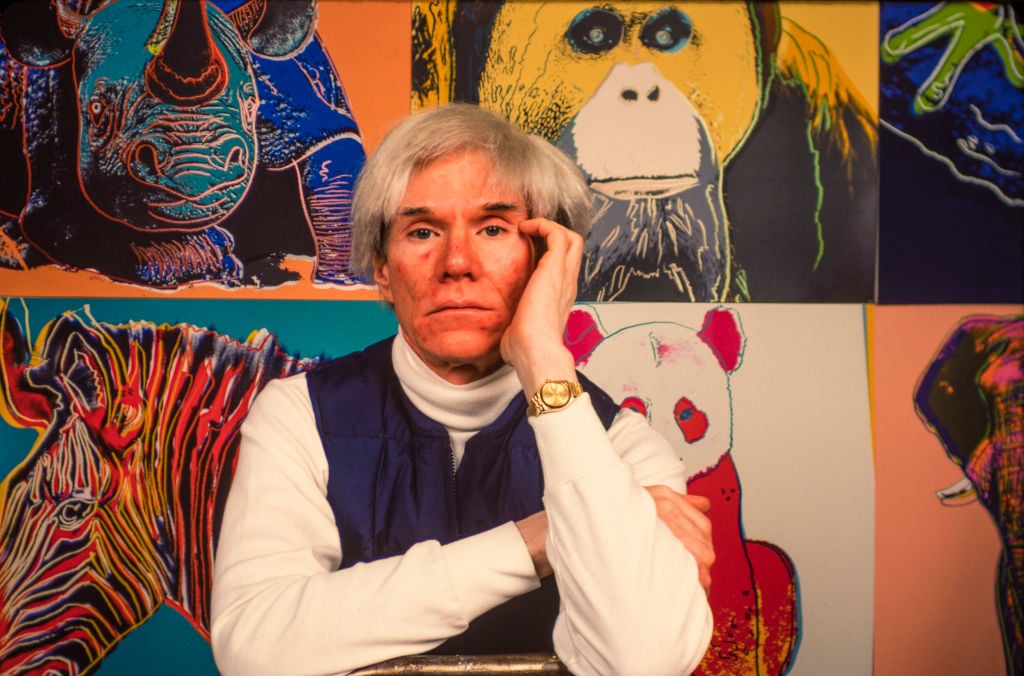
The enduring appeal of Andy Warhol is undeniable, and the Pop artist’s silkscreen Marilyns and dollar signs have long felt synonymous with the contemporary art market.
Last week, I reviewed a play in London about Warhol’s relationship with another art history (and art market) legend: Jean-Michel Basquiat. The play delved into a tension that felt as relevant in 2022 as it did in the 1980s, when Warhol’s star was fading and Basquiat’s was on the rise. Warhol was for the longest time the top performing U.S. artist at auction, and the volume of work circulating in the market at different price points has meant that his sales have often been looked at as a barometer for health of the wider art market.
In 2018, he was unseated by his younger protégé, and since then Warhol has continued to be a fixture of the main evening sales, but there has been more and more talk of a market softening for the icon.
We took it as a prompt to ask whether Warhol is still the bellwether of the art market, and took to Artnet’s Price Database to see what we could find.
The Context
Auction record: $105.4 million, achieved at Sotheby’s New York in November 2013
Andy Warhol’s Performance in 2021
Lots sold: 1219
Bought in: 260
Sell-through rate: 82.4 percent
Average sale price: $285,121
Mean estimate: $190,194
Total sales: $347.6 million
Top painting price: $47.4 million
Lowest painting price: $2,500
Lowest overall price: $153, for a silkscreen of flowers with some hand coloring, dated 1974
© 2022 Artnet Worldwide Corporation.
The Appraisal
- Market Softening. Warhol’s market reached its apex in 2013, when a $105.4 million record was set for a silkscreen “car crash” painting, and nothing offered at auction since has approached that price. The following year, riding on that high, Warhol’s market reached its highest total sales ever, at $653.7 million. Since then, his auction record has softened—though operators in the private market have a different story to tell, which is supported somewhat by the tightening of supply to auction since the salad days of 2013. In 2021, for example, 35.5 percent fewer works were offered for public sale.
- Reliable Performance. While it was already on a slowdown, like the rest of the market, in 2020 Warhol went through a pandemic slump, with total sales nearly halving from pre-pandemic levels. But the market bounced back in 2021, to $347.6 million total sales—33.6 percent higher than in 2019 and the highest it has been since 2015. Boosted by top-tier prices for trophy works offered as part of the Macklowe divorce settlement, and the estate of the late Texas rancher and oil heiress Anne Marion, Warhol was the third best performing artist at auction last year, bested only by Jean-Michel Basquiat and Pablo Picasso.
- Consistent demand. In 2021, some 44,609 users searched for Warhol in Artnet’s Price Database, which is 3,317 more than the previous year, but 3,982 fewer searches than 2019. While demand remains consistently high, market connoisseurs say the fluctuations reflect peaks caused by new audiences attracted to particular bodies of work, followed by troughs when that new demand is satisfied.
- Icons to Disaster. While a Warhol “Marilyn” remains the crème-de-la-crème of the Warhol market, the diversity of his subject matter means that different series have resonated differently with successive generations of collectors, who might prefer the 1960s icons such as Elvis, the death-and-disaster paintings, or more political works depicting Mao Zedong, drag queens, or his “hammer and sickle” series. His photographs and works from the 1980s possibly have the most room to grow, though a 1982 silkscreen “piss portrait” of Jean-Michel Basquiat fetched his second-highest price at auction last year, indicating that there could be a newfound appreciation for the later works on the horizon.
- A Warhol for Everyone. There has been reliable interest at all levels of the market, which has helped keep prices high. Some 92 works by Warhol have sold for more than $10 million, and 45 works have sold for more than $20 million. Meanwhile, his prints and editions market remains powerful, with some seven sets of screen prints in editions of 150 to 250 selling for more than $1 million in 2021 alone.
The Bottom Line
Andy Warhol’s market is driven by volume—he is said to have produced more than 10,000 works throughout his career—as well as diversity in medium, price, and subject matter, which means audiences of all stripes can have access to the market.
While there is clearly genuine demand across all levels, a handful of key players are invested in keeping prices high at the top, and consistently use the auction rooms as marketing platforms—which has a ripple effect on the rest of the market, including prints released in large edition sizes.
There is no denying sales have been lower since the Warhol zenith in 2014, but the consistency of his performance, which is reliably supported by the stats across a large volume of sales, means there is a positive feedback loop to the market that will most likely continue to impress.